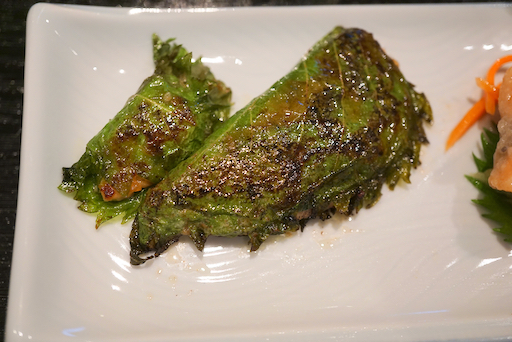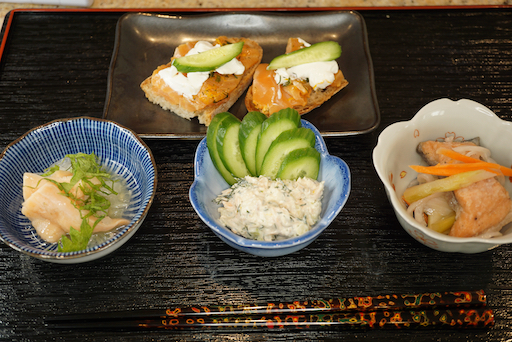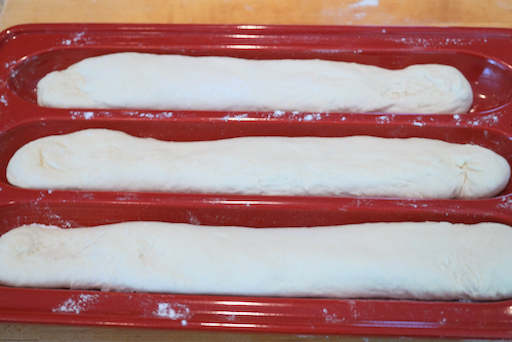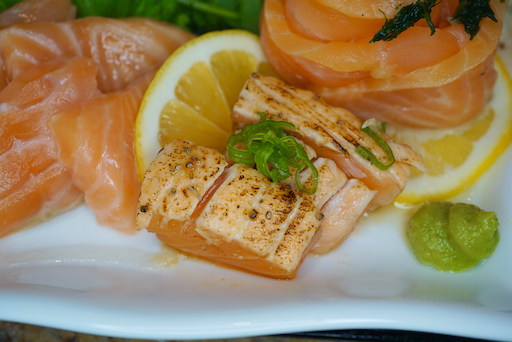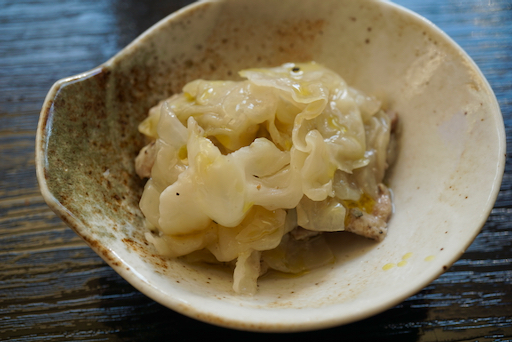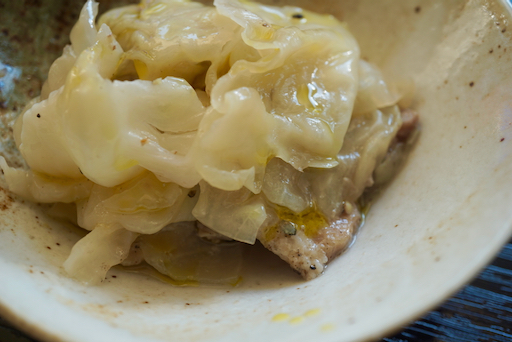I garnished it with chiffonade of perilla and some white sesame.
Ingredients: (appetizers for two)
1/2 block of sashimi tuna (in our case, frozen yellowfin), thawed if frozen, cut into small cubes
1/2 ripe avocado
Marinade:
3 tbs red wine (I had an open California cab).
2 tbs soy sauce (I reduced the soy sauce from the original recipe)
1 tbs mirin
1/4 tsp dark sesame oil
Directions
In a Ziploc bag, add the marinade and tuna cubes. Remove the air as much as possible and let it marinate in the refrigerator for a few hours (in my case, it was close to10 hours).
Just before serving, take out the tuna cubes, blot off the excess marinade using a paper towel.
>Remove the stone and skin from the avocado, cut into bite-sized pieces, dress with either lemon juice or yuzu juice (to prevent discoloration, I used yuzu juice from the bottle).
Mix the tuna and avocado in a bowl ( I added a few more drops of Yuzu juice).
Serve on the perilla leaves and garnish with a chiffonade of perilla and some sesame seeds.
In a Ziploc bag, add the marinade and tuna cubes. Remove the air as much as possible and let it marinate in the refrigerator for a few hours (in my case, it was close to10 hours).
Just before serving, take out the tuna cubes, blot off the excess marinade using a paper towel.
>Remove the stone and skin from the avocado, cut into bite-sized pieces, dress with either lemon juice or yuzu juice (to prevent discoloration, I used yuzu juice from the bottle).
Mix the tuna and avocado in a bowl ( I added a few more drops of Yuzu juice).
Serve on the perilla leaves and garnish with a chiffonade of perilla and some sesame seeds.
This was pretty good especially considering that the frozen yellowfin tuna which was passed its prime. I thought we would add soy sauce when we ate it but the tuna was nicely seasoned and there was no need to add soy sauce. Since it was marinated in red wine, this could have gone well with red wine but we had cold sake.










